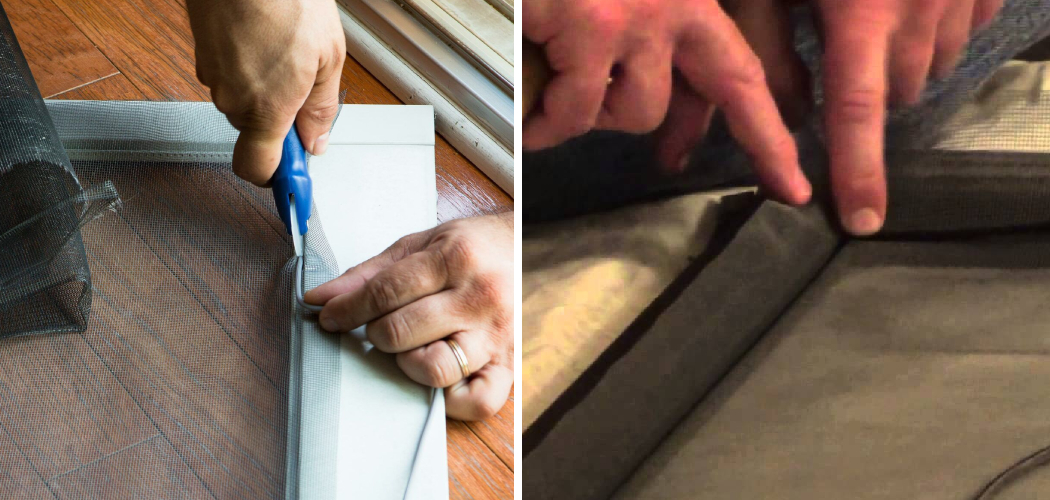A wooden screen door can be a charming addition to any home, providing both functionality and aesthetic appeal. However, over time, the screen on the door may become damaged or worn out, compromising its effectiveness. Rescreening a wooden screen door is a relatively simple and cost-effective solution to restore its functionality and enhance its lifespan.
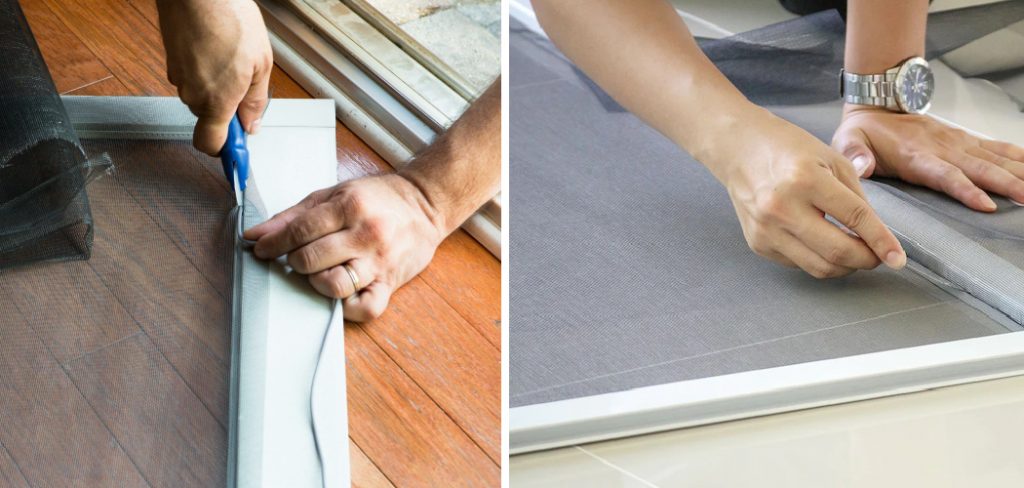
In this article, we will guide you through the step-by-step process of how to rescreen a wooden screen door, ensuring that you can tackle this DIY project with confidence. From gathering the necessary tools and materials to removing the old screen and installing a new one, we will cover each stage in detail, providing useful tips along the way.
By following our instructions, you’ll be able to revive your wooden screen door and enjoy the benefits of improved ventilation and protection against insects, all while preserving the door’s classic charm.
The Importance of a Well-Maintained Screen Door for Ventilation and Pest Control
Wooden screen doors are a popular choice for adding ventilation and insect protection to homes. Not only do they provide the convenience of allowing air to flow freely through your home, but they also prevent pesky bugs and other pests from entering. By rescreening a wooden screen door you can ensure that it is up to the task of keeping undesired critters at bay.
Regular maintenance of the screen door is not only important for efficient ventilation, but also for pest control. If the mesh on your wooden screen door becomes worn or torn, it will no longer be effective at keeping out pests such as mosquitoes and other flying insects.
Additionally, if gaps develop between the frame and the mesh, rodents may find their way into your home. Regular maintenance and upkeep of the screen door will help to ensure that it is functioning properly and keeping pests at bay.
Rescreening a wooden screen door is a relatively simple process that can be done in just a few steps. By taking the time to measure, cut, and install replacement mesh on your screen door, you are helping to maintain adequate ventilation as well as ensuring that your home is properly protected from pests and other intruders. With the proper tools, patience, and guidance from helpful online tutorials, you can easily rescreen a wooden screen door in no time.
Understanding the Need to Rescreen a Wooden Screen Door
Wooden screen doors are an attractive and effective way to protect your home from the elements while also allowing ventilation. However, over time, wooden screen doors can become damaged or weakened due to exposure to weather, insects, and other factors. If your wooden screen door is beginning to show signs of wear and tear, it’s important to address the issue quickly in order to preserve its effectiveness. One way you can do this is by rescreening the door.
Rescreening a wooden screen door involves replacing the existing mesh with new screening material that is strong enough to withstand everyday wear and tear. This process requires some knowledge of tools and materials as well as a bit of patience but it’s not overly complicated and can be accomplished by most do-it-yourselfers. Before you begin, it’s important to understand the steps involved in rescreening a wooden screen door so that you can make sure the job is done properly.

The first step in rescreening a wooden screen door is to remove the existing mesh from the frame. This can be done by removing the staples that hold the mesh in place and carefully prying it off of the frame. Next, you’ll want to measure the dimensions of the frame so that you can purchase new screening material in an appropriate size. It’s important to get a mesh that is strong enough to withstand the elements but still allows for good airflow.
10 Ways How to Rescreen a Wooden Screen Door
1. Gather the Necessary Tools and Materials:
Before you begin the rescreening process, it’s essential to gather all the required tools and materials. These include a screwdriver, pliers, utility knife, screen spline roller, screen spline, replacement screen material (such as fiberglass or aluminum), measuring tape, scissors, and a staple gun or nails. Having everything prepared beforehand will make the process smoother and more efficient.
2. Remove the Door from Its Hinges:
To make the rescreening process easier, remove the wooden screen door from its hinges. Use a screwdriver to loosen and remove the screws that hold the hinges in place. Place the door on a flat and stable work surface, preferably outdoors or in a well-ventilated area where you have enough space to maneuver.
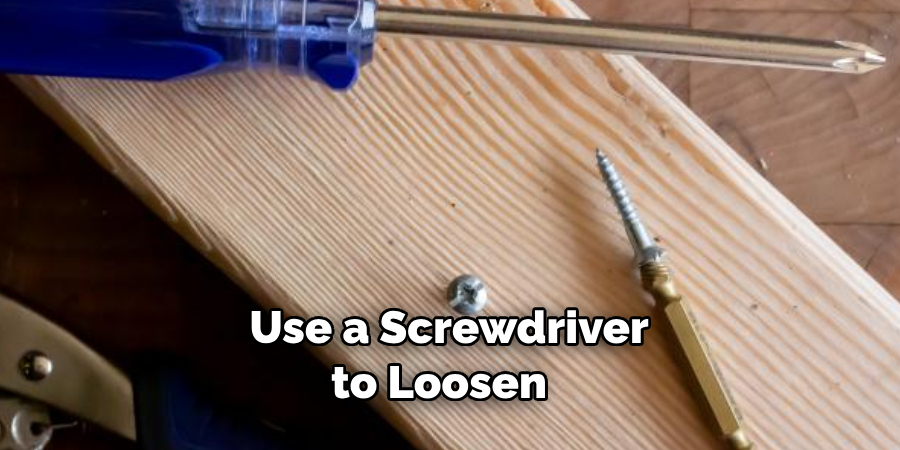
3. Remove the Old Screen:
Carefully inspect the wooden screen door to identify any staples or nails securing the old screen in place. Use a screwdriver or pliers to remove them, taking care not to damage the wooden frame. Slowly and gently pull the old screen away from the frame, ensuring you don’t tear or distort it further. If necessary, trim any excess screen material to make removal easier.
4. Clean the Wooden Frame:
Once the old screen is removed, take the time to clean the wooden frame thoroughly. Use a soft brush or cloth to remove any dirt, dust, or debris that may have accumulated over time. Pay attention to corners, edges, and grooves where debris may have settled. Ensure the surface is smooth and free from any protruding nails or staples that could interfere with the installation of the new screen.
5. Measure and Cut the Replacement Screen:
Take accurate measurements of the wooden frame to determine the size of the replacement screen material required. Use a measuring tape to measure both the width and height, adding a few inches to each side to allow for secure attachment. Once you have the measurements, transfer them to the replacement screen material. Use sharp scissors to cut the material, ensuring a clean and precise edge.
6. Position the Replacement Screen:
With the replacement screen material cut to size, carefully position it over the wooden frame, ensuring it covers the entire area. Allow for an equal overhang on all sides to ensure proper attachment. If necessary, use weights or clamps to hold the screen in place temporarily while you work.
7. Install the New Screen:
Starting from one side of the wooden frame, use a screen spline roller to press the screen into the groove along the frame. The screen spline roller is a specialized tool designed to facilitate the installation process by evenly pressing the screen into the groove.
Apply even pressure as you work your way around the frame, making sure the screen remains taut and wrinkle-free. This step requires patience and precision to achieve a professional-looking result.
8. Trim the Excess Screen:
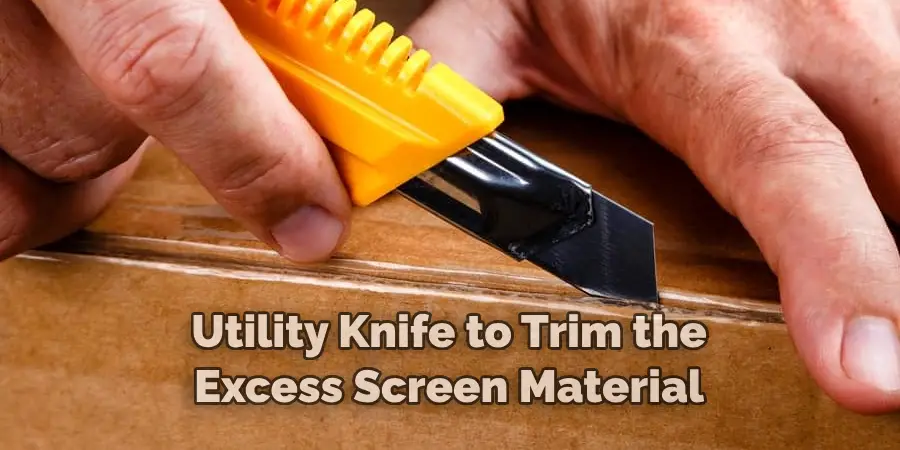
Once the screen is securely installed, use a utility knife to trim the excess screen material. Carefully follow the contour of the wooden frame, ensuring a clean and neat edge. Take caution not to cut too close to the spline, as this could potentially loosen the screen.
9. Secure the Screen:
After trimming the excess screen, it’s time to secure it firmly in place. Take the new screen spline, which is a flexible strip made of rubber or vinyl, and press it into the groove alongside the screen using the screen spline roller.
Apply firm pressure to ensure a snug fit, but be careful not to stretch or distort the spline. Working in small sections, continue pressing the spline into the groove until it covers the entire perimeter of the screen. This step is crucial to ensure the screen remains securely in place.
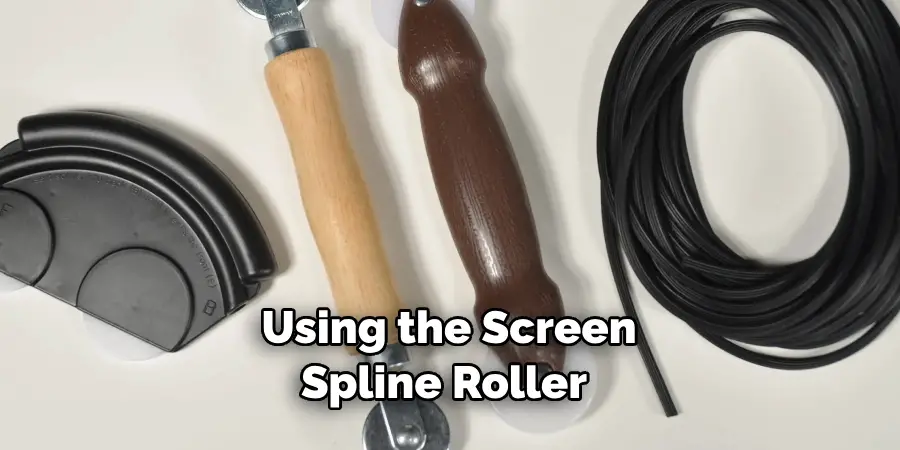
10. Reattach the Door:
With the new screen securely installed, it’s time to reattach the wooden screen door to its hinges. Align the hinges on the door with the corresponding hinge plates on the door frame. Insert the screws and tighten them with a screwdriver, ensuring a secure attachment. Test the door by opening and closing it to ensure it moves smoothly and effortlessly. If any adjustments or realignments are needed, make them before finalizing the installation.
Some Common Mistakes When Rescreen a Wooden Screen Door
1. Not Cleaning the Door and Frame Properly before Beginning
This is an important step that should not be overlooked as it will greatly affect the quality of the final product. Make sure to remove any dirt, debris, and rust with a wire brush before beginning.
2. Not Using the Correct Tools
For a successful job, you will need specific tools such as a screen roller and heavy-duty scissors. Without these tools, it will be difficult to correctly cut and attach the screening material to the door frame.
3. Measurements not Being Accurate
Taking accurate measurements is key when rescreening a wooden screen door. If your measurements are off even by an inch or two, it can throw off the entire project and create problems with installation down the line.
4. Not Choosing the Right Screen Material
There are several types of screen material available, and it is important to choose the right one for the job. Consider factors such as durability and intended use when making your decision.
Conclusion
Knowing how to rescreen a wooden screen door can be a valuable skill as they are an economical way to enhance the appearance and security of your home. It only requires basic tools and knowledge, which anyone can learn with enough practice. Although rescreening a wooden screen door is a bit tricky, it’s definitely possible.
With the help of this blog post, we hope you have obtained enough insight to understand the process thoroughly and get started making repairs confidently. You will soon realize that it isn’t as daunting of a task as it may seem. Just make sure that you dedicate your full attention and take extra care when completing the project step-by-step.

